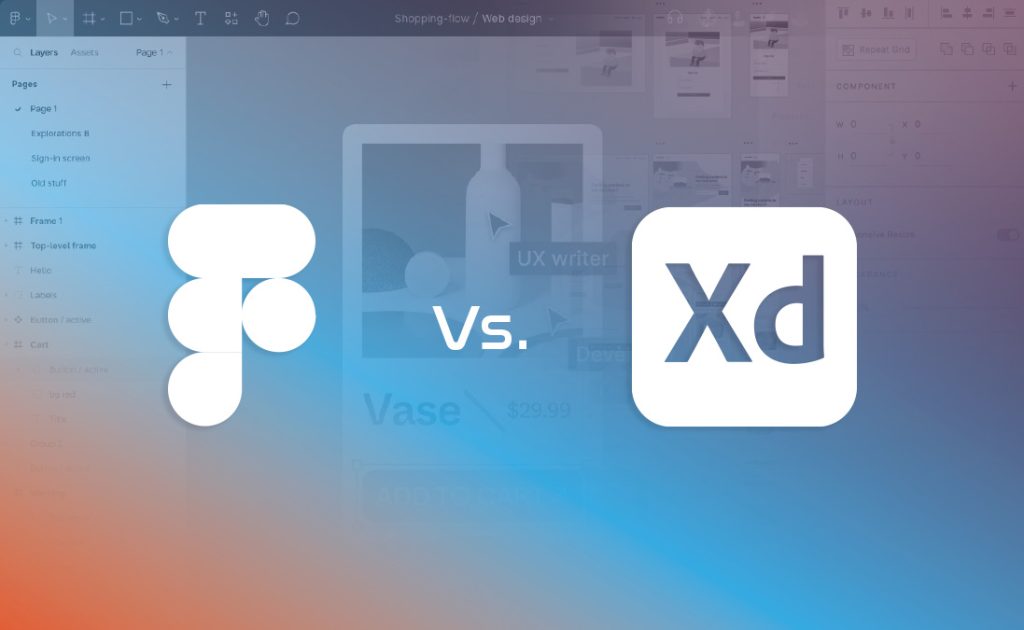In the world of web design and prototyping, two tools have emerged as undisputed leaders: Figma and Adobe XD.
Both platforms offer a robust set of features that facilitate the creation of interactive designs, but they have key differences that may make one more suitable for certain projects than the other. In this article, we will delve into the features of Figma and Adobe XD, highlighting the advantages of Figma over its competitor.
Real-Time Collaboration
One of Figma’s standout features is its real-time collaboration capability. Unlike Adobe XD, which requires the creation and sharing of files for collaboration, Figma allows multiple users to work on the same file simultaneously. This function, similar to Google Docs, is especially valuable for geographically distributed design teams as it allows instant synchronization and avoids version conflicts.
Accessibility and Flexibility
Figma is a cloud-based tool, meaning files can be accessed from anywhere on any device with an internet connection. This accessibility eliminates the need for software installation and facilitates remote work. Adobe XD, while it has made strides with cloud storage options, still relies heavily on a desktop application, which can limit its flexibility.
Advanced Prototyping and Animations
Both platforms offer advanced tools for creating interactive prototypes and animations, but Figma stands out for its simplicity and power. The ability to create prototypes with complex interactions and smooth transitions is more intuitive in Figma. Additionally, Figma’s Auto Layout tool allows for the design of interfaces that automatically adapt to different screen sizes, improving efficiency and precision in responsive design.
Integrations and Plugins
Figma offers a wide range of integrations and plugins that enhance its functionality and cater to the specific needs of designers. From project management tools to graphics optimization plugins, Figma allows for a customizable design experience. Adobe XD also has a growing library of plugins, but Figma’s variety and ease of integration remain superior.
Ease of Use and Learning Curve
Figma’s user interface is intuitive and user-friendly for both beginners and experienced designers. The learning curve is relatively low, allowing new users to adapt quickly. Adobe XD, while also accessible, may present a steeper learning curve due to its integration with the broader Adobe Creative Cloud ecosystem, which can be overwhelming for some users.
Cost and Accessibility
In terms of cost, Figma offers a robust free plan that is sufficient for small teams and individual projects. Its paid plans are competitive and scalable according to team needs. Adobe XD also offers a free version, but its features are more limited compared to Figma’s free plan, and the paid plans can be more expensive, especially for larger teams.
Both Figma and Adobe XD are powerful tools for web design and prototyping, but Figma excels in several key aspects that can make it more appealing for modern design teams. Its real-time collaboration capability, cloud accessibility, ease of use, and a wide range of integrations and plugins make Figma a superior choice for many projects. While Adobe XD has its own strengths, the flexibility and efficiency of Figma make it an indispensable tool for any design team looking to optimize their workflow and enhance collaboration.
Ultimately, the choice between Figma and Adobe XD will depend on the specific needs of your project and team, but it is undeniable that Figma offers significant advantages that can make a difference in creating effective and collaborative web prototypes.



